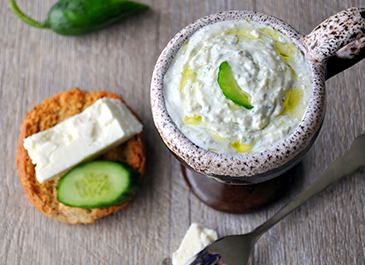It’s a fair assumption to say that as long as the world has had milk, the world has had yogurt. As is the case with most cultured or fermented dairy products, yogurt was likely an accidental discovery. Luckily for us, this delicious accident became a staple in the diet of many cultures across the globe. Outside of North America, the most common type of yogurt is made using goat milk. Depending on where you are in the world, though, you can also find yogurt made with milk from sheep, water buffalo, yak, camels, or even horses. Cow milk is by far the most popular yogurt variety here in North America.
What makes yogurt so special is its active bacteria cultures. Microorganisms like lactobacillus bulgaricus live in yogurt and give it the flavour that’s characteristic of fermented foods. As research now strongly suggests, these active bacteria cultures in yogurt greatly benefit gut and overall health, too. They may even be the reason those with lactose intolerance problems can sometimes tolerate this dairy product. So let’s dig in.
Adding yogurt to your diet
Yogurt can be made at home using milk and either dried cultures or a scoop of plain store-bought yogurt. The magic temperature for making yogurt is between 43 and 45 degrees Celsius. Keep it at this temperature for hours and the beneficial bacteria will flourish. If it’s convenience you’re looking for, you’ll find yogurt in a variety of styles at your local grocer: 0 percent fat to full fat, thick and rich Greek to thin and runny regular yogurt.
Flavour-wise, North Americans are most accustomed to using yogurt in sweet applications like fruit and yogurt parfaits, granola, smoothies and frozen yogurt desserts. Yogurt, however, can be used in savoury dishes, too. For instance, there’s Balkan tzatziki dip with lemon, garlic cucumber. Other parts of the world will even use other spices to change up the flavour of the tzatziki.
Here are a few more uses for yogurt in savoury dishes. Add to cold summer soups for creaminess, use in place of cream in piping hot curries, replace the sour cream in your borscht with yogurt, turn into a glaze for cheese or mix into pancake batter. Don’t forget about pasta sauces, meat marinades and easy to make salad dressings. The possibilities are nearly endless.
Antonio is back in cooking class action this spring. He’s looking forward to getting back into the kitchen with Choices’ Nutrition Team to host cooking class demos at various locations.
To find out how you can register visit choicesmarkets.com/events.

